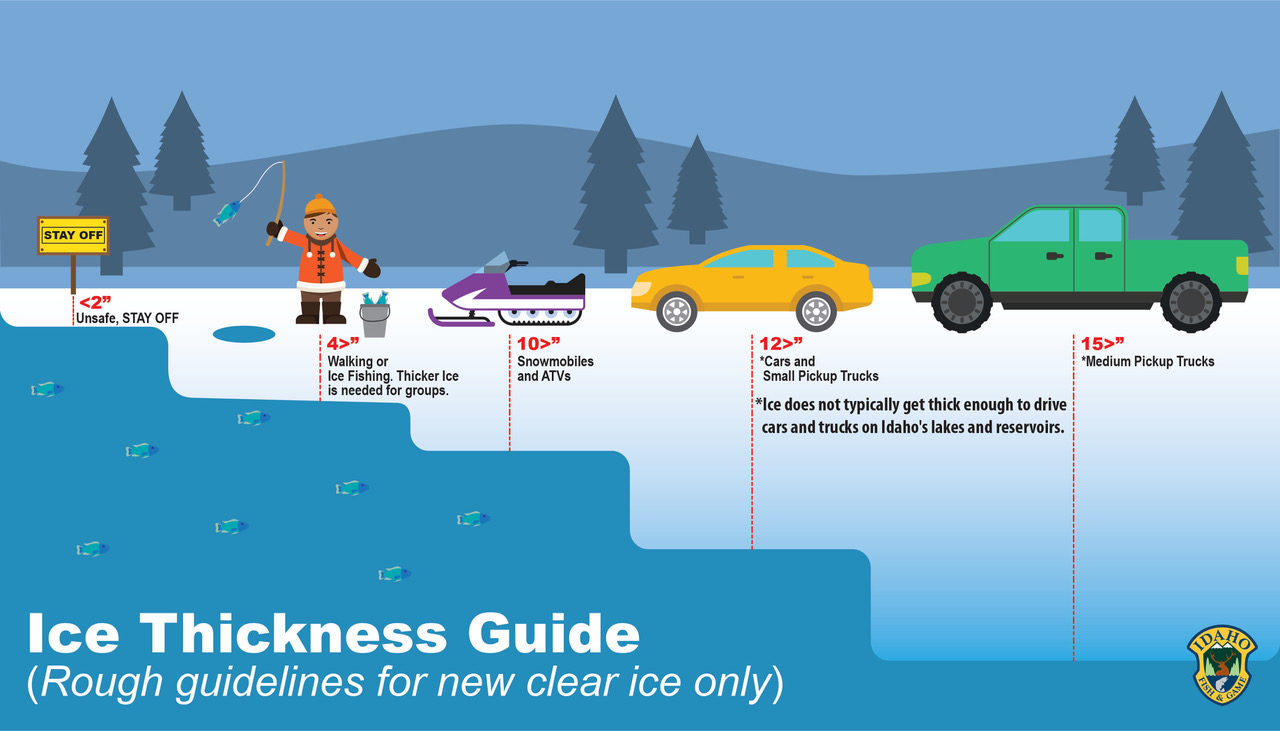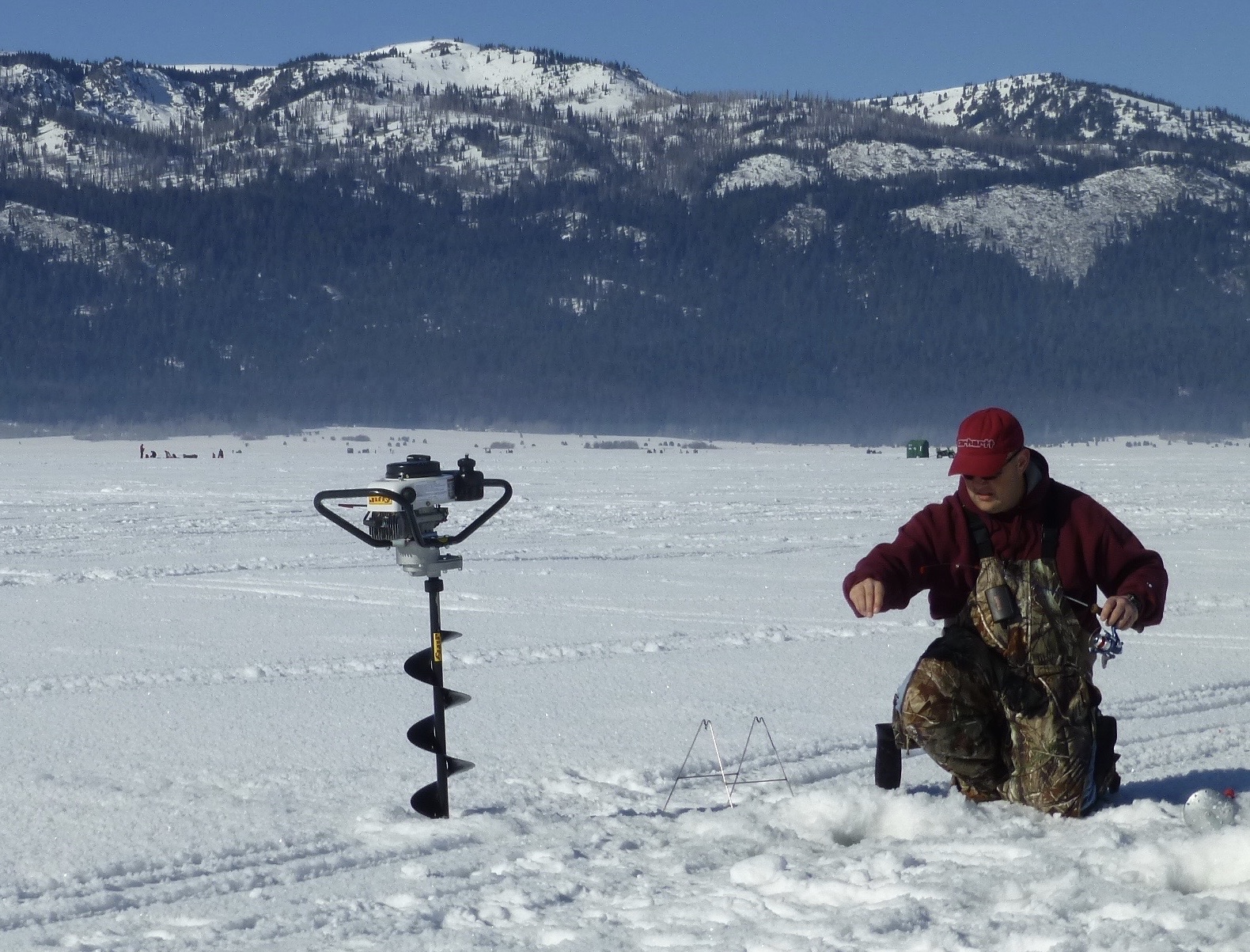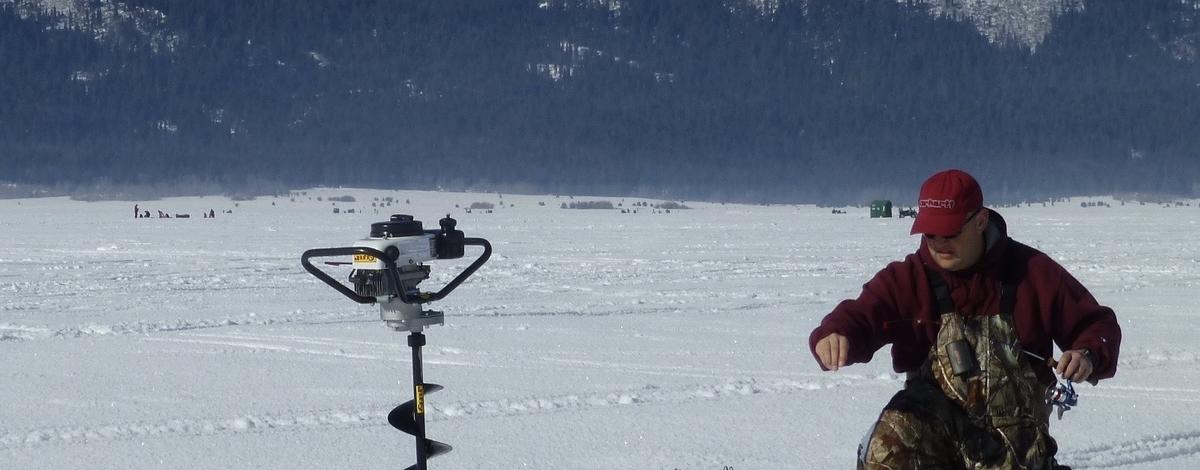Folks are chomping at the bit to get out and ice fish this winter. During December last year, you may have been ice fishing your favorite places already, but mild temperatures so far this winter have kept the lakes from freezing as of yet. With the new year fast approaching, you’ll be fishing the hardwater before you know it. Here are some things to keep in mind as you prepare to fish the early season ice.
Walking on thin ice
The first thing you should be familiar with is recommended ice thicknesses for safe travel. Ice must be a minimum of 4 inches thick to support a single person, and should be thicker if you’re fishing with friends. Remember that ice conditions are constantly changing and are not uniform throughout the lake. Drill test holes with your auger as you move out to different areas of the lake and make sure it is a safe thickness.

There are several pieces of safety gear that early season ice anglers can carry in the event they fall through the ice. Wearing a life jacket under your winter jacket will help you stay afloat. There are also ice fishing floatation suits available for purchase that keep you both warm and keep you afloat if you fall through. Throw ropes come in handy for rescuing others, and ice picks can be used for self-rescue.
ATVs, UTVs and snowmobiles
It’s definitely nice to stay mobile, but if you’re thinking about bringing an ATV, UTV or snowmobile out with you, the ice should be greater than 8 inches thick. Early season winter in Idaho comes with variable weather. One minute it’s snowing, the next minute it’s sunny and warm…and then before you know it, it starts raining. Variable weather conditions can lead to sketchy ice conditions due to hidden, weak layers in the ice. Eight inches of variable ice is not as supportive as 8 inches of solid ice.
Once the ice gets thick enough that motorized travel is safe, surface conditions on top of the ice can become an issue. Even with tracks instead of wheels, UTVs and ATVs don’t get around nearly as well as snowmobiles when there is slush or deep snow on top of the ice. Snowmobiles with a long-track are definitely the best mode of travel when the ice is thick enough and the surface conditions are deep. Check local sources for ice and surface conditions before you head out on your trip. If it’s deep and slushy, leave the ATVs and UTVs at home.

Conditions are always changing
Just because the ice was 4 inches thick yesterday, doesn’t mean it will be tomorrow. Conditions are changing every day, especially in the early season. Ice is thicker in some spots than in others just naturally, due to spring locations, inlets and outlets and the shifting of ice as it builds and recedes.
Early in the season, ice starts to form around the edge of the lake first. Sheets of ice form and continue to build and recede as the weather changes. The wind moves the sheets around, too, and when they collide with each other and continue to freeze they form pressure ridges. It’s tough to tell how thick the ice is in these pressure ridge locations and early in the season there are weak spots all along these areas.
In one incident during December, a group of ice anglers were rescued at Henrys Lake after the sheet of ice they were fishing detached from the shore when warmer weather created a weak bond between ice sheets. The wind picked up and moved the ice away from shore and stranded the anglers. Luckily, rescuers were able to reach the anglers, and disaster was averted – but this is a good reminder that conditions are always changing in the early season. Take extra steps to stay safe.
Under the right circumstances and weather conditions, ice fishing can be an exclamation point on any angler’s season. Follow these safety tips and ensure your winter fishing season is safe and enjoyable. Be sure to check out Fish and Game’s Idaho Fish Planner to learn more about each ice fishery, safety tips, access sites and seasons and regulations, and to plan out your next weekend fishing trip. Be sure to check out Fish and Game’s ice fishing webpage for more details.

